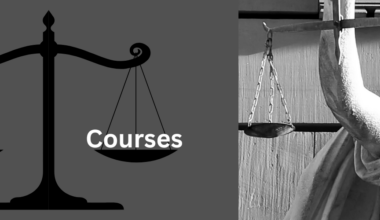The Supreme Court has struck down a rule that disallowed girls and women in the 10-50 age group from entering the Sabarimala temple in Kerala. Chief Justice Dipak Misra-headed Constitution bench in a 4-1 verdict said the temple rule violated their right to equality and right to worship.
The only note of dissent came from the lone woman judge on the bench, Justice Indu Malhotra. “We have no hesitation in saying that such an exclusionary practice violates the right of women to visit and enter a temple to freely practice Hindu religion and to exhibit her devotion towards Lord Ayyappa.
The denial of this right to women significantly denudes them of their right to worship,” the court said. Justices AM Khanwilkar, RF Nariman concurred with the CJI.
Justice DY Chandrachud termed the custom as a form of “untouchability” which cannot be allowed under the Constitution. “Article 17 certainly applies to untouchability practices in relation to lower castes, but it will also apply to the systemic humiliation, exclusion and subjugation faced by women.”
“Prejudice against women based on notions of impurity and pollution associated with menstruation is a symbol of exclusion. The social exclusion of women based on menstrual status is a form of untouchability which is an anathema to constitutional values.”
In any event, he said, the practice of excluding women from the temple at Sabarimala is not an essential religious practice. “The court must decline to grant constitutional legitimacy to practices which derogate from the dignity of women and to their entitlement to an equal citizenship.
Notions of ‘purity and pollution’, which stigmatize individuals, have no place in a constitutional order.” Justice Malhotra batted for letting faith be, however irrational. “In a secular polity, issues which are matters of deep religious faith and sentiment must not ordinarily be interfered with by courts.” She, however, drew the line at pernicious practices such as sati.
She said a secular polity must allow heterogeneity in religion, allow diverse forms of worship, even if irrational, insisting that courts must not enter into areas of faith.
“Constitutional morality in a secular polity would imply harmonisation of fundamental rights, which include the right of every individual, religious denomination, or sect, to practise their faith and belief in accordance with the tenets of their religion, irrespective of whether the practice is rational or logical.”
The majority rejected all the arguments of the temple board which had resisted allowing women of all ages. This included an argument that it was an age-old practice and an essential practice of Hindu religion and that followers of Ayyappa were a separate denomination.
On the contrary, it is an essential part of the Hindu religion to allow Hindu women to enter a temple as devotees, the bench said.
Read also: Victims Rights in India
Chandrachud said all individuals were created equal. “To exclude women from worship by allowing the right to worship to men is to place women in a position of subordination. The Constitution should not become an instrument for the perpetuation of patriarchy.”
Sabarimala in Kerala barred women aged between 10 and 50 from entering the temple. It is one of the largest Hindu pilgrimage centres visited by 50 million devotees every year. The rules which mandate the ban were listed in Kerala Hindu Places of Public Worship (Authorisation of Entry) Rules of 1965. A timeline of the events before the ban was struck down..
How the Ban was Revoked
1990– S Mahendran fi les plea in Kerala HC seeking ban on women’s entry to temple.
Apr 5, 1991– Kerala HC upholds ageold restriction on women of a certain agegroup entering the temple
2006– A petition challenging the ban was fi led in the Supreme Court by Indian Young Lawyers Association on the grounds that the rule violates the freedom to follow and propagate religion, listed in Article 25 of the Indian Constitution
Nov 2007- LDF government fi les affi davit supporting PIL questioning ban on women’s entry
Jan 11, 2016– Two-judge bench of SC questions practice banning entry of women at the temple
Feb 6- UDF government takes U-turn, tells SC it is duty bound to “protect the right to practice the religion of these devotees”
Apr 21– Hind Navotthana Pratishtan and Narayanashrama Tapovanam fi les plea in SC supporting entry of women
Nov 7– SC Rejects Plea for Independent Probe into Arrests Nov 2007 LDF government files affidavit supporting PIL questioning ban on women’s entry LDF government fi les fresh affidavit in SC saying it favoured the entry of women of all age groups.
Nov 7, 2016– LDF government tells the top court that it favours entry of women of all ages
October 13, 2017– Case is referred to a SC Constitution bench
Oct 27– Plea filed in SC for genderequal bench to hear the case
July 17, 2018– Five-judge constitution bench starts hearing the matter
January 2018– Temple authorities make it mandatory for female devotees to furnish their age proof while visiting. The decision came after a number of women from the banned age group were detained while entering Sabarimala.
July 24– SC made it clear that the ban on entry of women would be tested on “constitutional ethos”
July 26– The Pandalam Royal family challenged the petition seeking entry of women into the temple, terming it “mischievous” on grounds of being against practices of the Hindu faith. The lawyer appearing on their behalf had told the court that the temple deity, Lord Ayyappa, is an eternal celibate and therefore women of menstruating ages should not be allowed in the premises.
August 1, 2018– The five-judge Constitution bench reserved its judgement on the petitions challenging the ban after hearing the case for eight days.
September 28, 2018– SC allows women of all age groups to enter temple. Rules custom of barring women is violative of Art 25 (Clause 1) and Rule 3(b) of Kerala Hindu Places of Worship.






